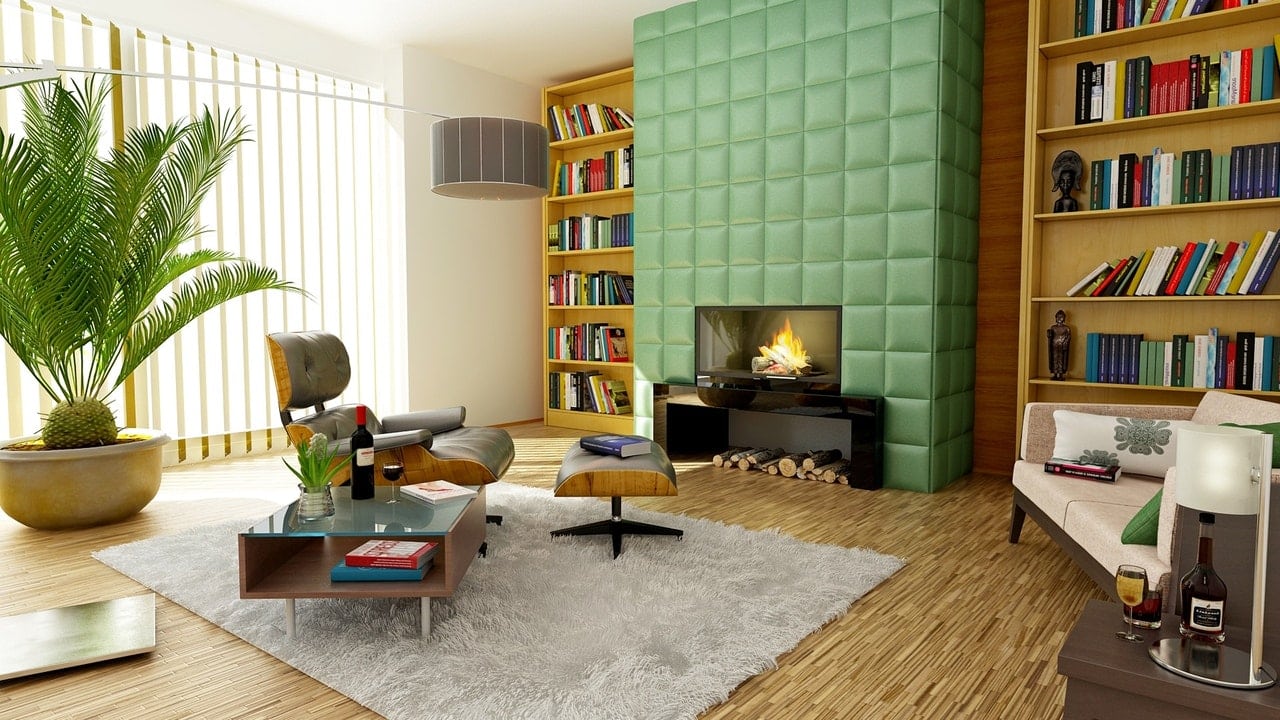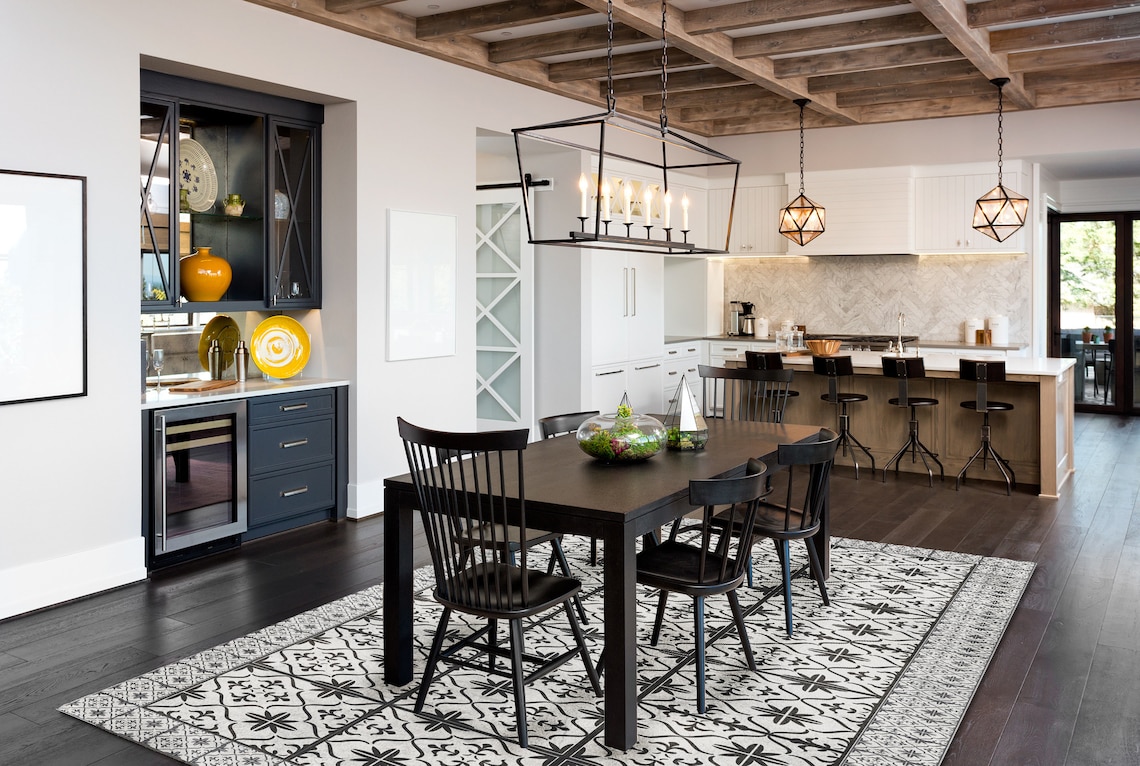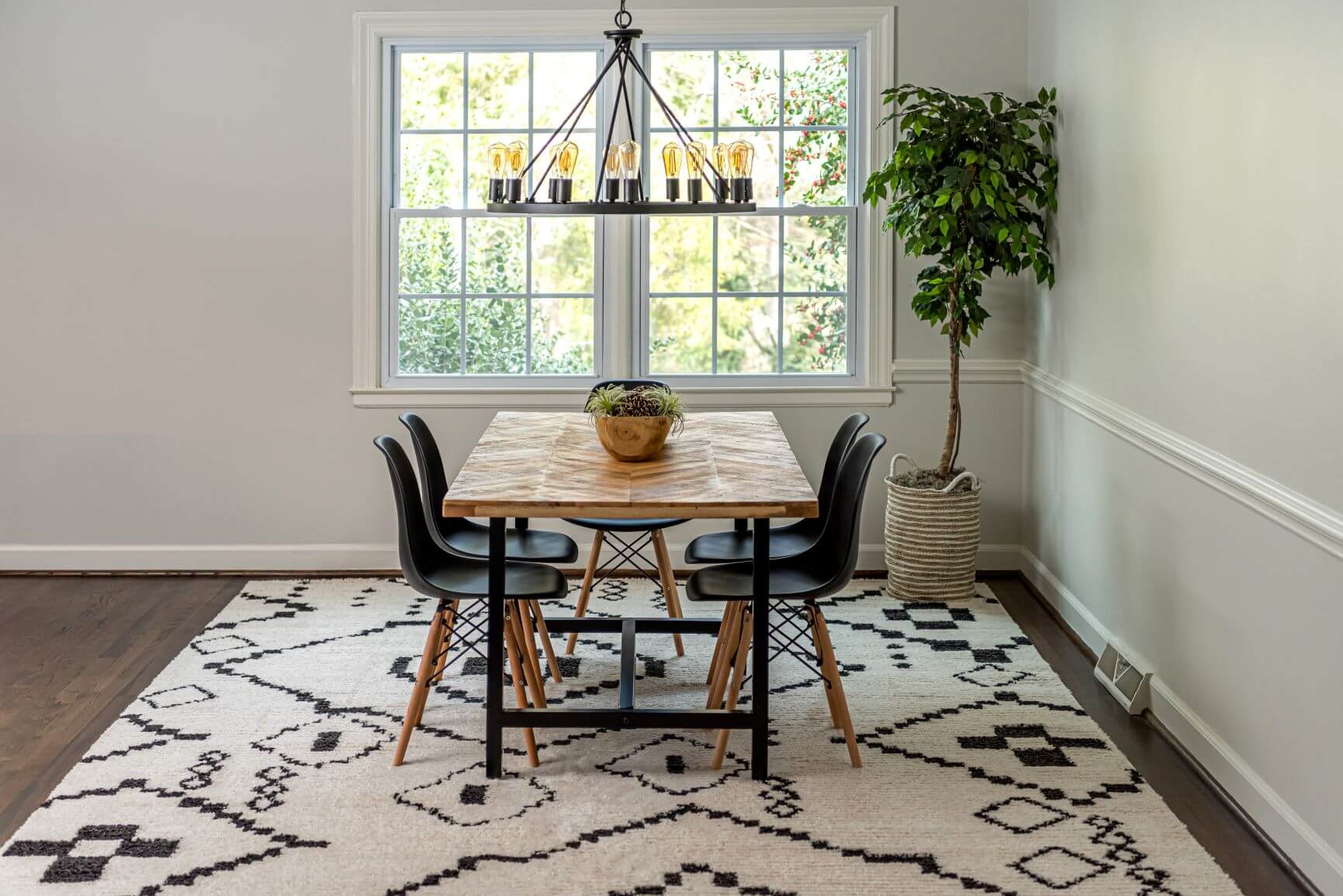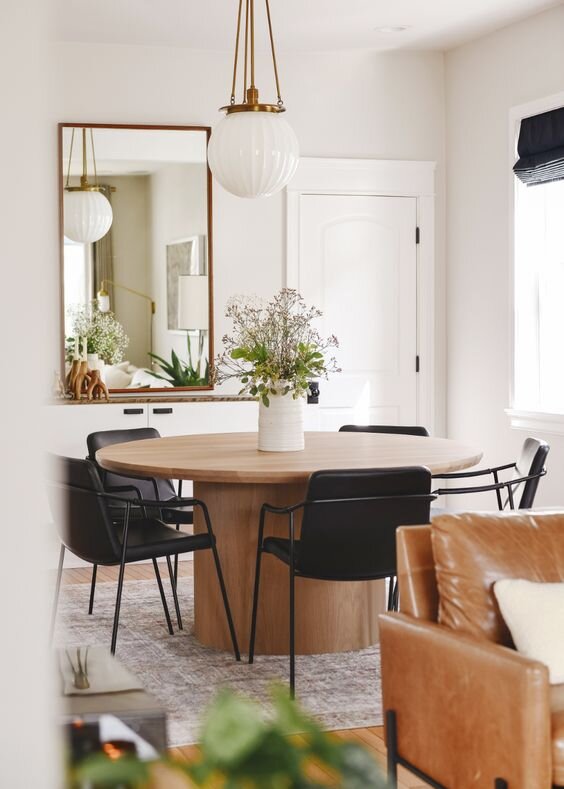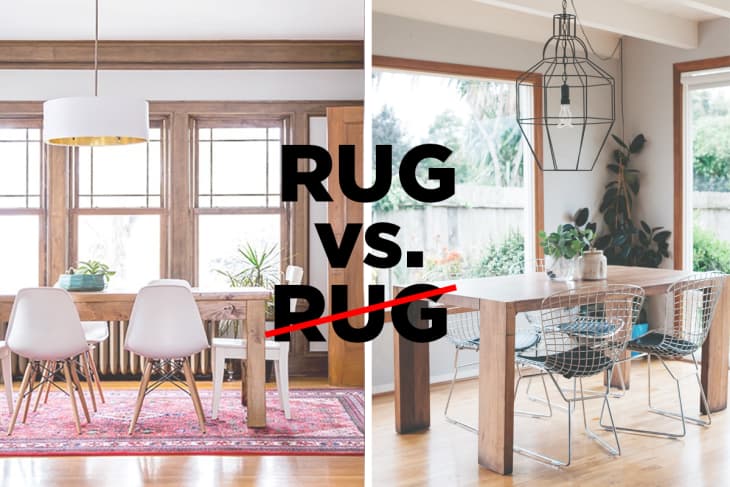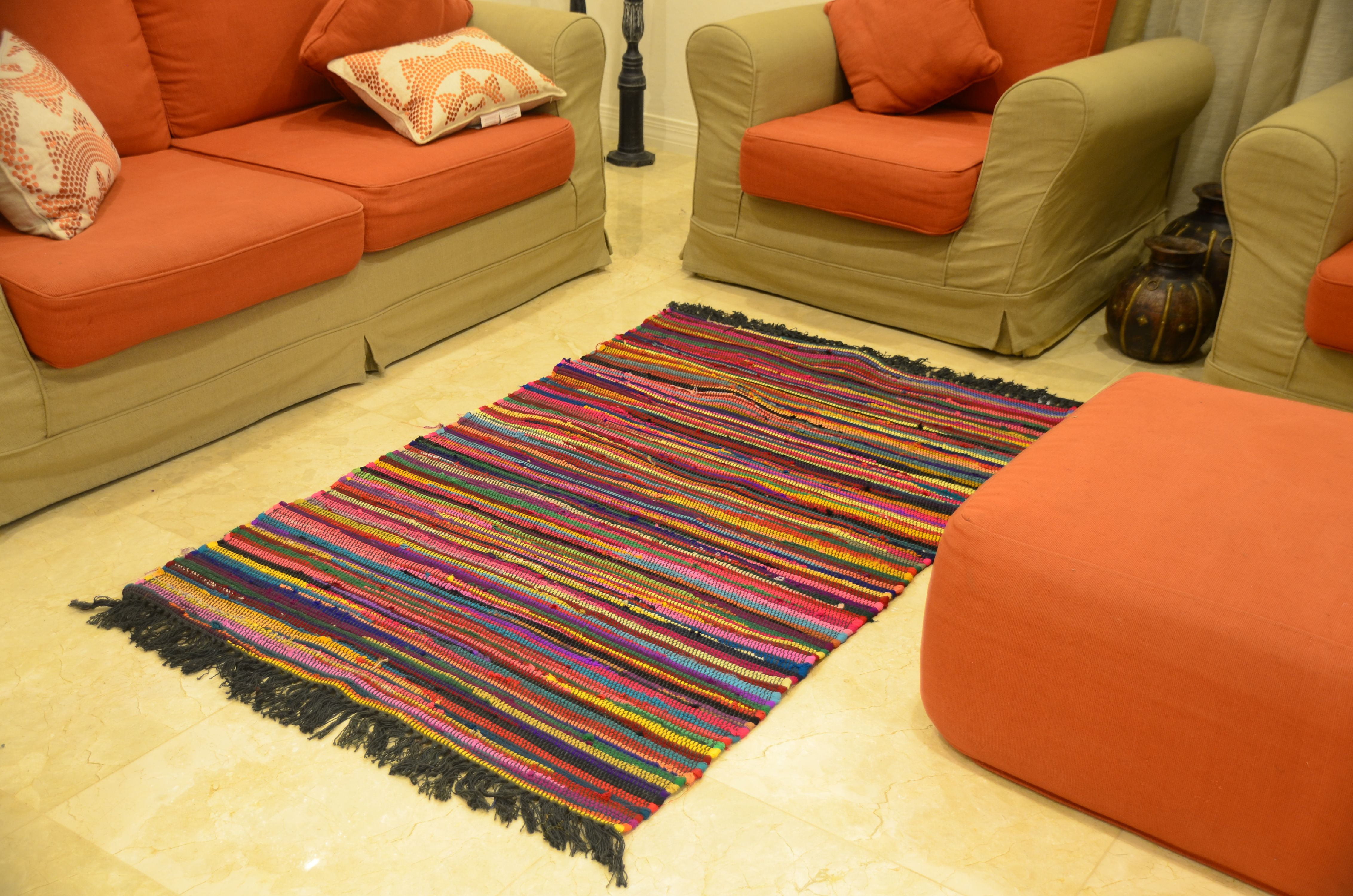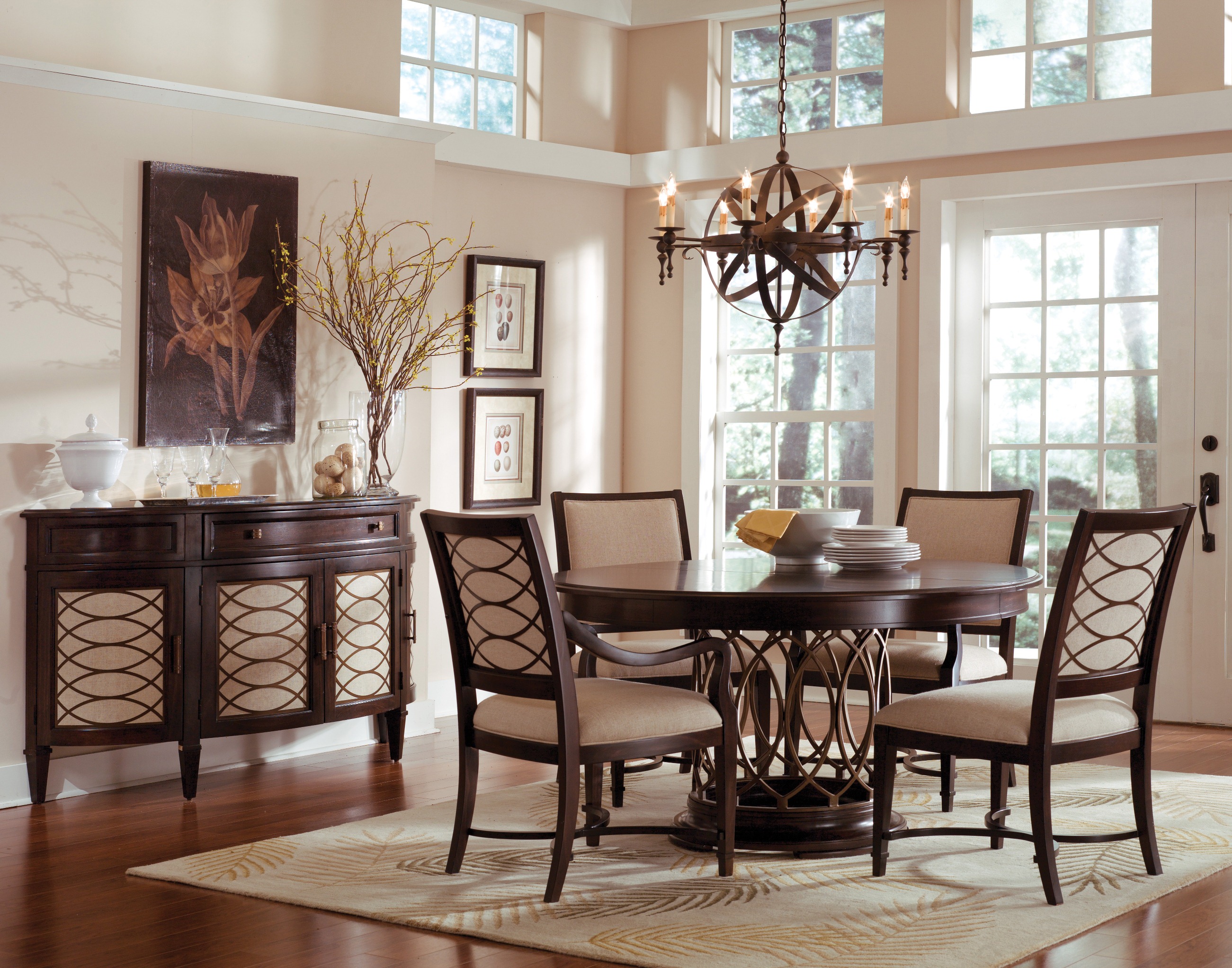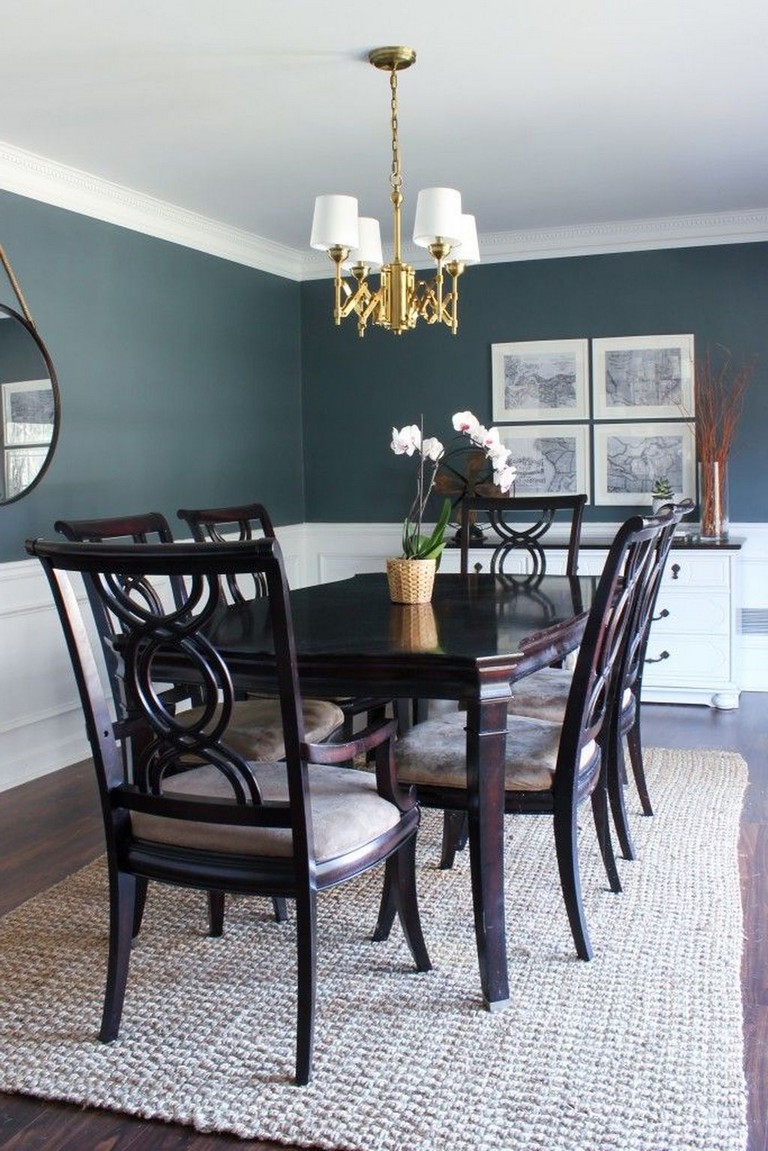Throw Rug Or Not For Dining Room
When it comes to decorating your dining room, one of the key elements to consider is whether or not to add a throw rug. Some people swear by them, while others prefer a bare floor. So, what's the verdict? Let's dive into the pros and cons to help you decide if a throw rug is right for your dining room.
Area Rugs for Dining Room
First things first, let's clarify what we mean by a "throw rug." In this context, we're talking about area rugs specifically designed for use in a dining room. These rugs are typically larger in size and come in a variety of shapes, such as rectangular, square, or round, to fit under your dining table and chairs.
Dining Room Rug Ideas
If you're considering adding a rug to your dining room, the first step is to come up with some rug ideas. One popular option is to choose a rug that complements the colors and style of your dining room furniture. For example, if your dining chairs have a patterned fabric, consider a solid-colored rug to balance it out.
Another idea is to choose a rug that adds a pop of color to your dining room. If your dining room is primarily neutral in color, a bright or bold rug can add visual interest and tie the room together.
Dining Room Rug Size
When it comes to choosing the right size rug for your dining room, there are a few things to keep in mind. You want the rug to be large enough to accommodate your dining table and chairs, but not so large that it overwhelms the room.
A good rule of thumb is to choose a rug that is at least two feet wider and longer than your dining table. This will ensure that your chairs can still fit on the rug when pulled out and that there is enough space around the table for comfortable movement.
Dining Room Rug Placement
Once you have your rug selected, it's time to consider placement. The most common placement for a dining room rug is centered under the table. This helps to anchor the table and create a cohesive look in the room.
However, you can also experiment with placing the rug at an angle or partially under the table to add interest and break up the room's symmetry.
Dining Room Rug Under Table
If you do decide to place your rug under the table, make sure that it is large enough to accommodate the table and chairs when they are fully pulled out. It's also important to choose a rug material that can withstand high foot traffic and potential spills.
Consider a rug with a low pile or a flatweave option, such as a jute or sisal rug, which are both durable and easy to clean.
Dining Room Rug Rules
While there are no hard and fast rules when it comes to decorating with a dining room rug, there are a few guidelines to keep in mind. First, make sure that the rug is in proportion to your dining room. A small rug in a large room will look out of place and vice versa.
Also, consider the shape of your rug in relation to your dining table. A round rug may look out of place under a rectangular table, and vice versa. And finally, make sure that the rug complements the overall style of your dining room, whether it's traditional, modern, or eclectic.
Dining Room Rug Trends
Like any other home decor element, dining room rugs are not immune to trends. In recent years, there has been a rise in popularity of vintage or antique rugs in dining rooms. These rugs add character and a sense of history to a space, and can also be a more sustainable option compared to buying a brand new rug.
Other current trends include bold geometric patterns, layered rugs, and natural fiber rugs like jute and bamboo.
Dining Room Rug Colors
When it comes to choosing the color of your dining room rug, there are a few things to consider. First, think about the color scheme of your dining room. If you have a neutral color palette, a rug in a bold or bright color can add a pop of interest. If your room is already full of color, a neutral rug can provide balance.
You can also consider using a rug to tie together different colors in the room. For example, if you have blue accents in your dining room, a rug with a blue pattern can help to pull the room together.
Dining Room Rug Material
The material of your dining room rug is another important factor to consider. As mentioned earlier, rugs made of natural fibers like jute and sisal are durable and easy to clean, making them a great choice for high-traffic areas like a dining room.
Other popular rug materials include wool, cotton, and synthetic blends. Ultimately, the material you choose will depend on your budget, style preferences, and maintenance needs.
In conclusion, whether or not to add a throw rug to your dining room is a personal decision. By considering factors such as size, placement, and material, you can find the perfect rug to complement your dining room and enhance its overall look and feel. Happy decorating!
Why a Throw Rug is a Must-Have for Your Dining Room
/choose-dining-room-rug-1391112-hero-4206622634654a6287cc0aff928c1fa1.jpg)
Adding Style and Warmth
 When it comes to designing your dining room, there are many elements to consider, from the furniture and lighting to the color scheme and decor. One often overlooked aspect is the addition of a
throw rug
. Not only does it add a touch of style and warmth to the space, but it also serves practical purposes that make it a must-have for any dining room.
When it comes to designing your dining room, there are many elements to consider, from the furniture and lighting to the color scheme and decor. One often overlooked aspect is the addition of a
throw rug
. Not only does it add a touch of style and warmth to the space, but it also serves practical purposes that make it a must-have for any dining room.
Creating a Focal Point
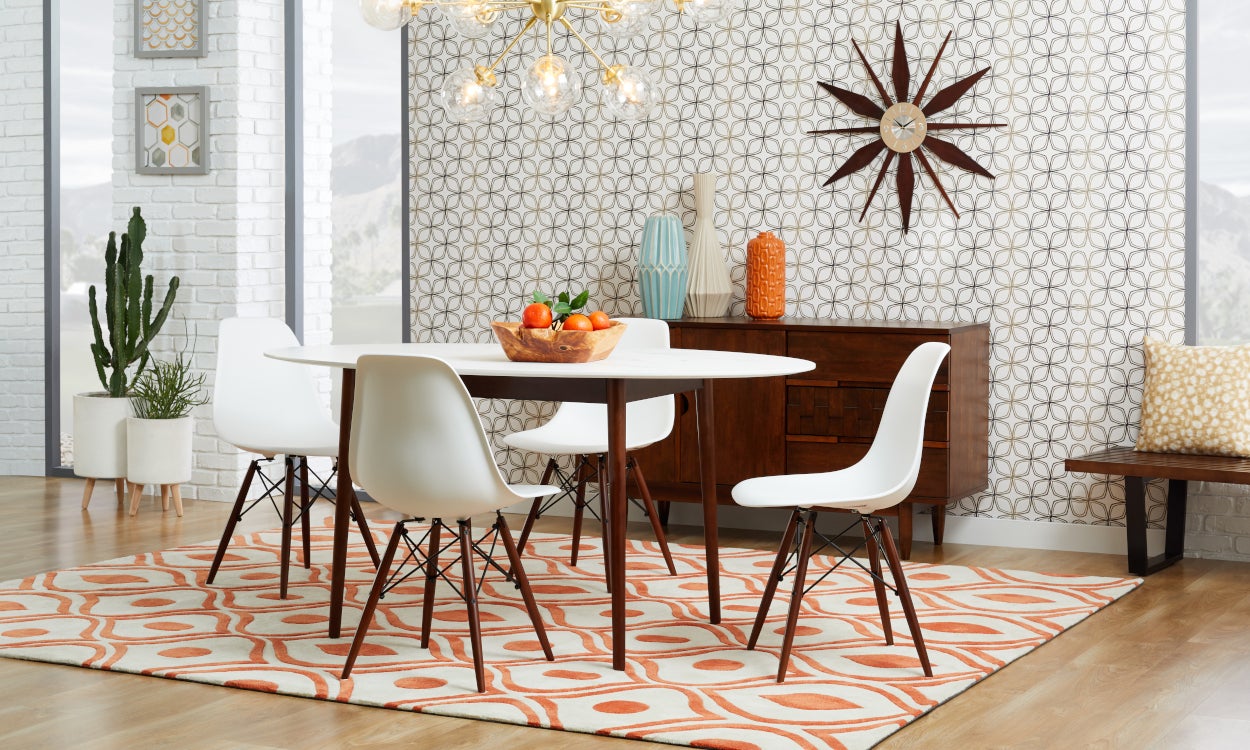 A
throw rug
is a great way to create a focal point in your dining room. Whether you opt for a bold pattern, a vibrant color, or a unique shape, a rug can draw the eye and tie the whole room together. This is especially important in open-concept spaces where the dining area may be connected to the living room or kitchen. A well-chosen rug can define the dining area and make it feel like its own separate space.
A
throw rug
is a great way to create a focal point in your dining room. Whether you opt for a bold pattern, a vibrant color, or a unique shape, a rug can draw the eye and tie the whole room together. This is especially important in open-concept spaces where the dining area may be connected to the living room or kitchen. A well-chosen rug can define the dining area and make it feel like its own separate space.
Protecting Your Floors
 Dining rooms are high-traffic areas, with chairs constantly being pushed in and out and spills happening from time to time. A
throw rug
can help protect your floors from scratches and stains, especially if you have hardwood or tile flooring. This can save you time and money in the long run, as well as prolong the life of your floors.
Dining rooms are high-traffic areas, with chairs constantly being pushed in and out and spills happening from time to time. A
throw rug
can help protect your floors from scratches and stains, especially if you have hardwood or tile flooring. This can save you time and money in the long run, as well as prolong the life of your floors.
Improving Acoustics
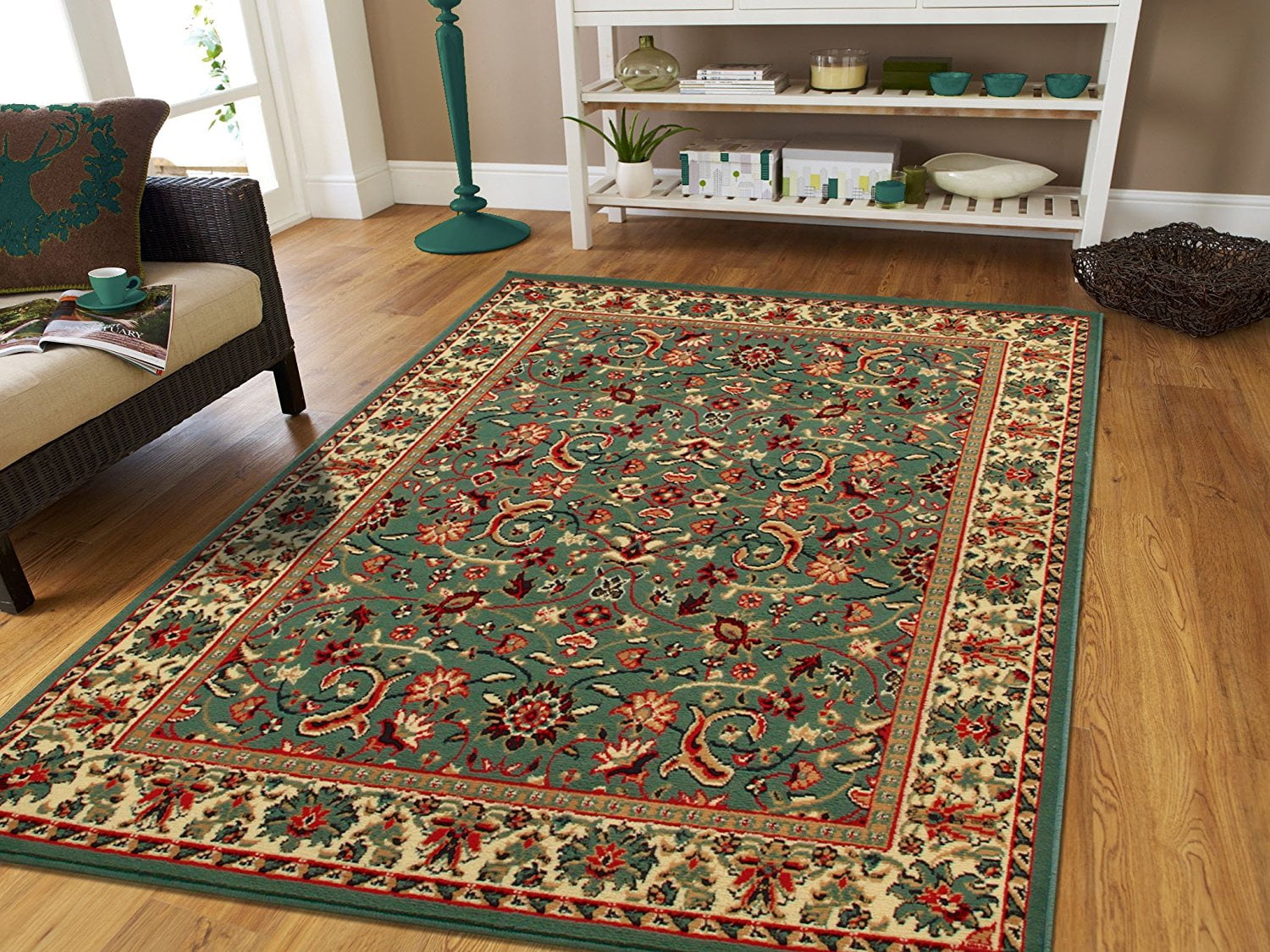 Hard surfaces like hardwood or tile can create a lot of echo in a dining room, making it difficult to have conversations at the table. A
throw rug
can help absorb some of the sound and improve the acoustics in the room, making it a more comfortable and welcoming space for dining and entertaining.
Hard surfaces like hardwood or tile can create a lot of echo in a dining room, making it difficult to have conversations at the table. A
throw rug
can help absorb some of the sound and improve the acoustics in the room, making it a more comfortable and welcoming space for dining and entertaining.
Easy to Change and Update
 One of the best things about a
throw rug
is that it's easy to change and update. If you decide to switch up your dining room decor or color scheme, you can simply swap out the rug for a new one without breaking the bank. This makes it a versatile and cost-effective design element for your dining room.
One of the best things about a
throw rug
is that it's easy to change and update. If you decide to switch up your dining room decor or color scheme, you can simply swap out the rug for a new one without breaking the bank. This makes it a versatile and cost-effective design element for your dining room.
Final Thoughts
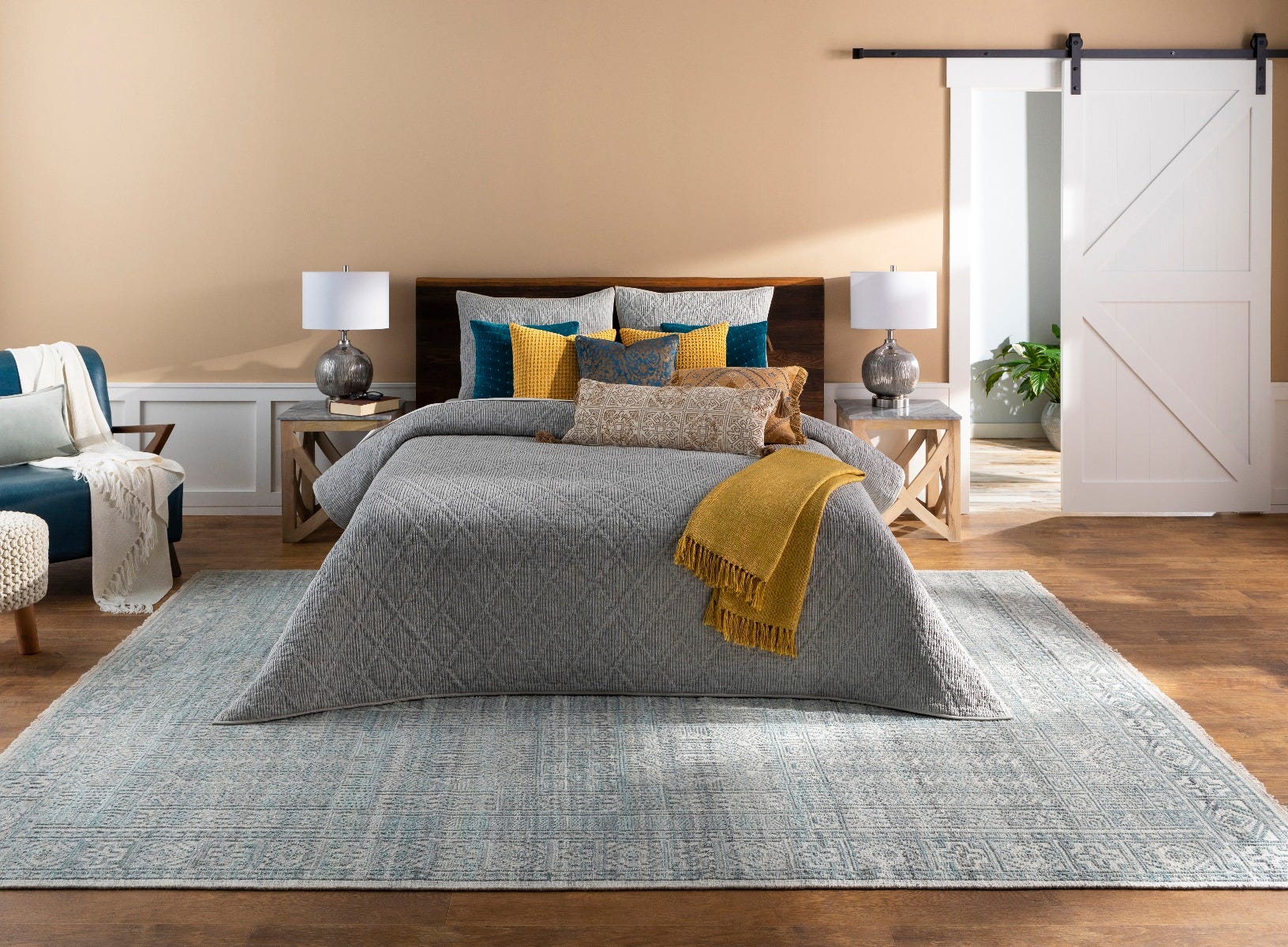 In conclusion, a
throw rug
is not just a decorative piece for your dining room, but a practical and functional addition as well. It can add style, warmth, and a focal point to the space, while also protecting your floors, improving acoustics, and being easily changeable. So, if you're debating whether or not to add a rug to your dining room, the answer is clear – it's a must-have for any well-designed space.
In conclusion, a
throw rug
is not just a decorative piece for your dining room, but a practical and functional addition as well. It can add style, warmth, and a focal point to the space, while also protecting your floors, improving acoustics, and being easily changeable. So, if you're debating whether or not to add a rug to your dining room, the answer is clear – it's a must-have for any well-designed space.

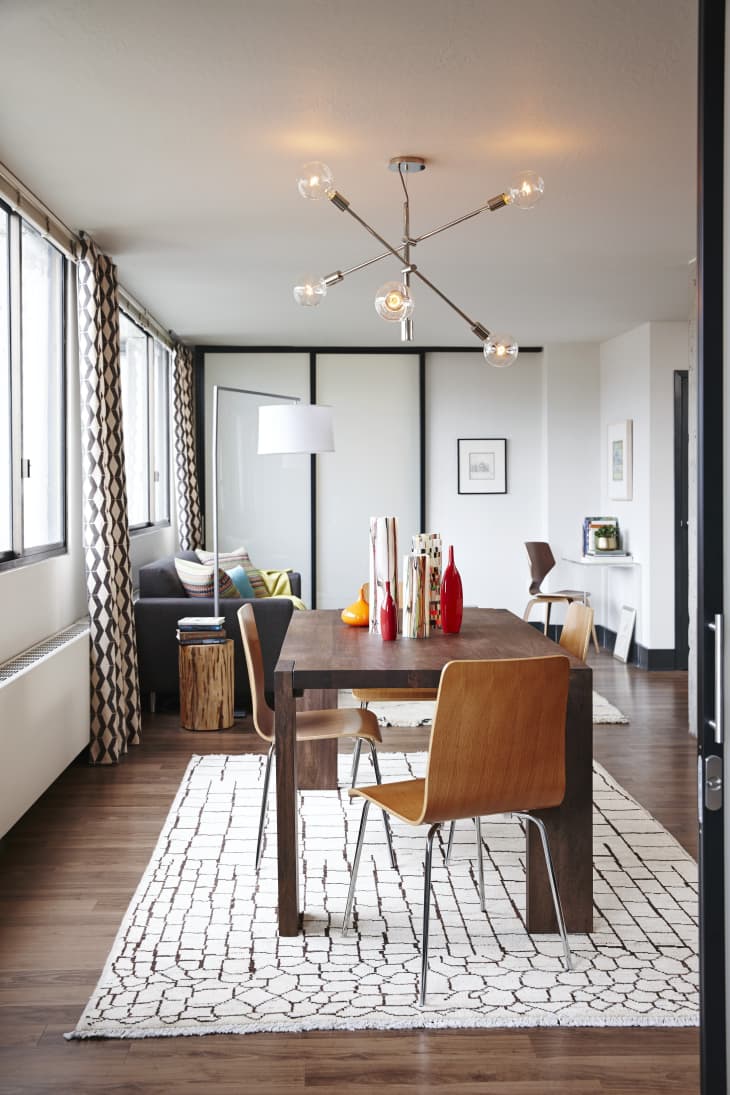
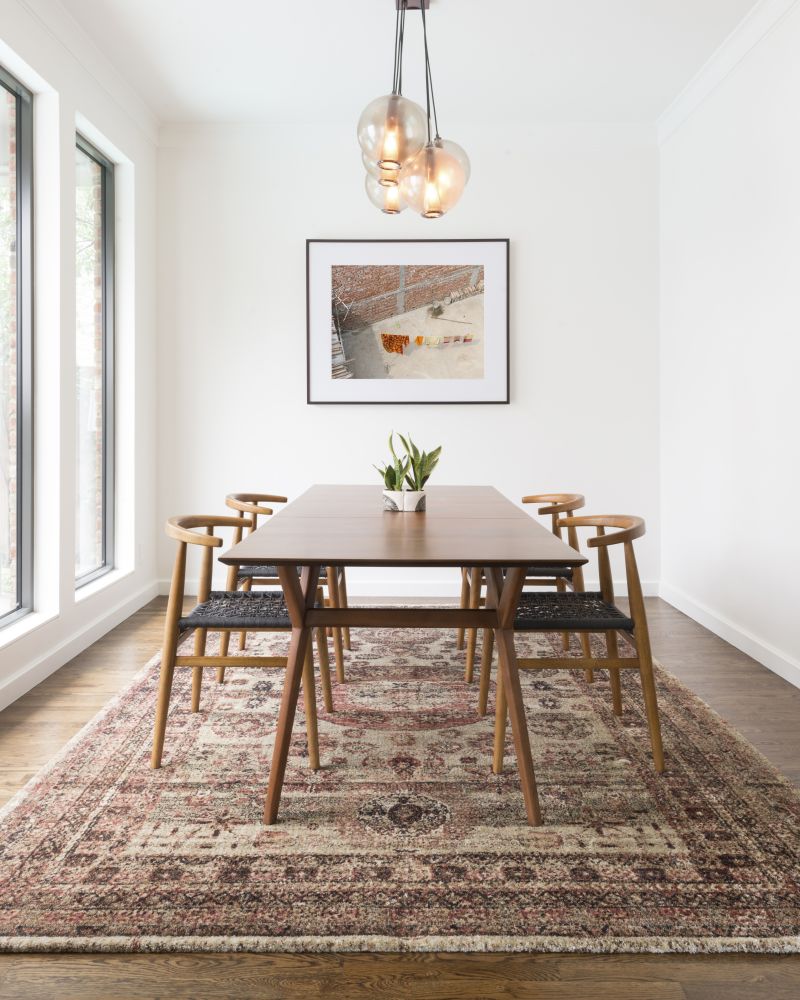
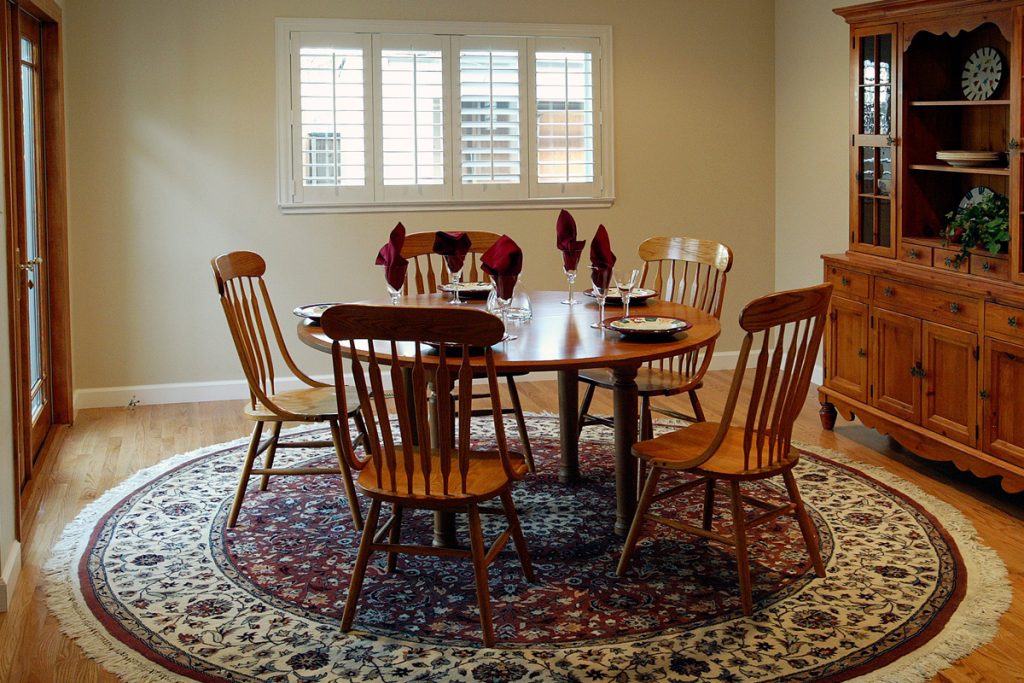
:max_bytes(150000):strip_icc()/choose-dining-room-rug-1391112-04-a277ed0c7b984cd7add9f5e830bba170.jpg)
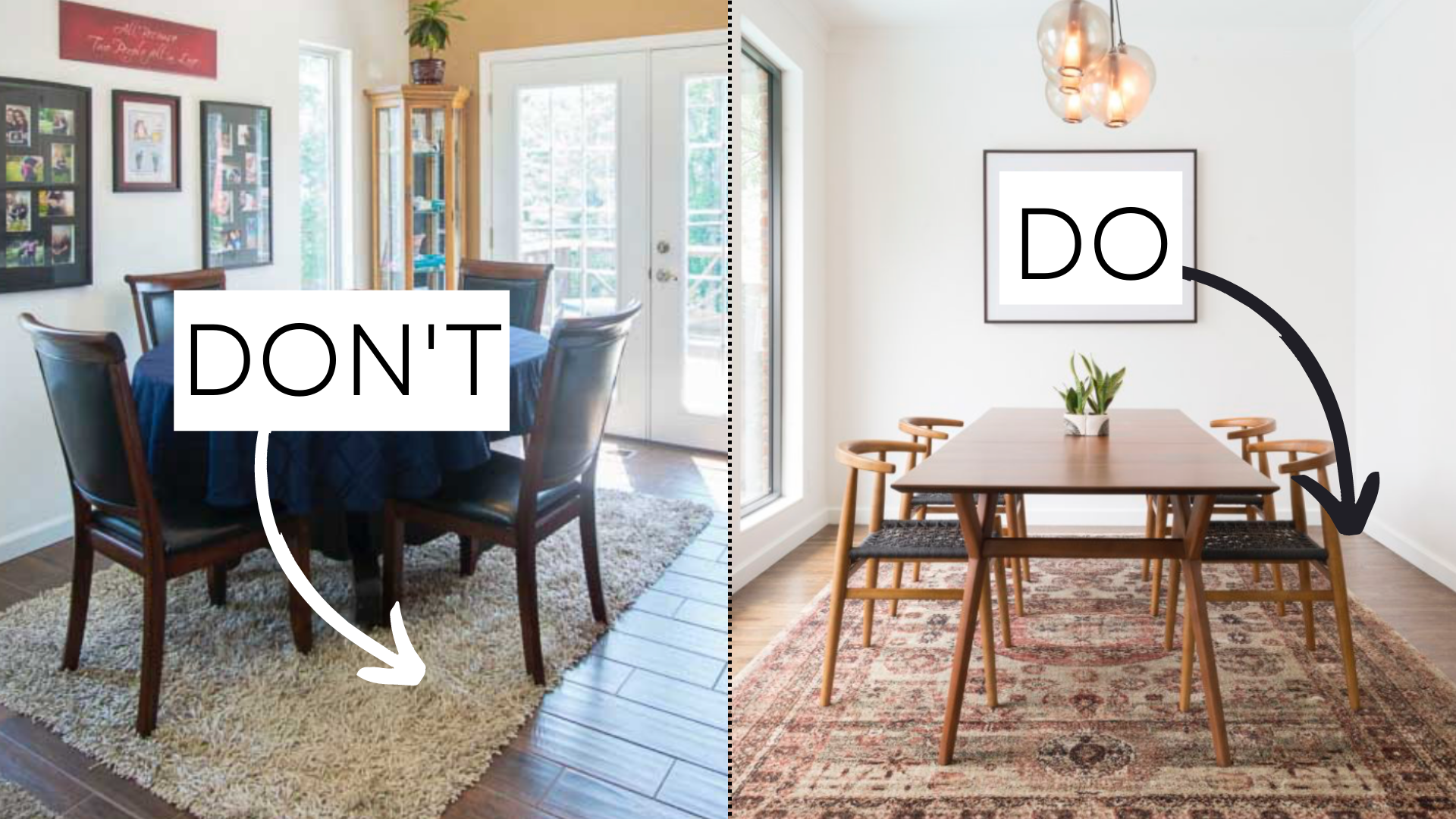


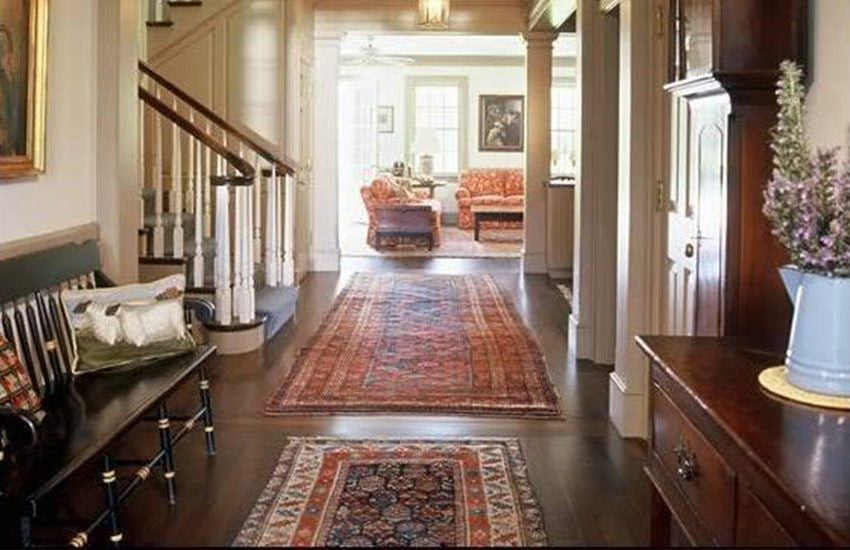






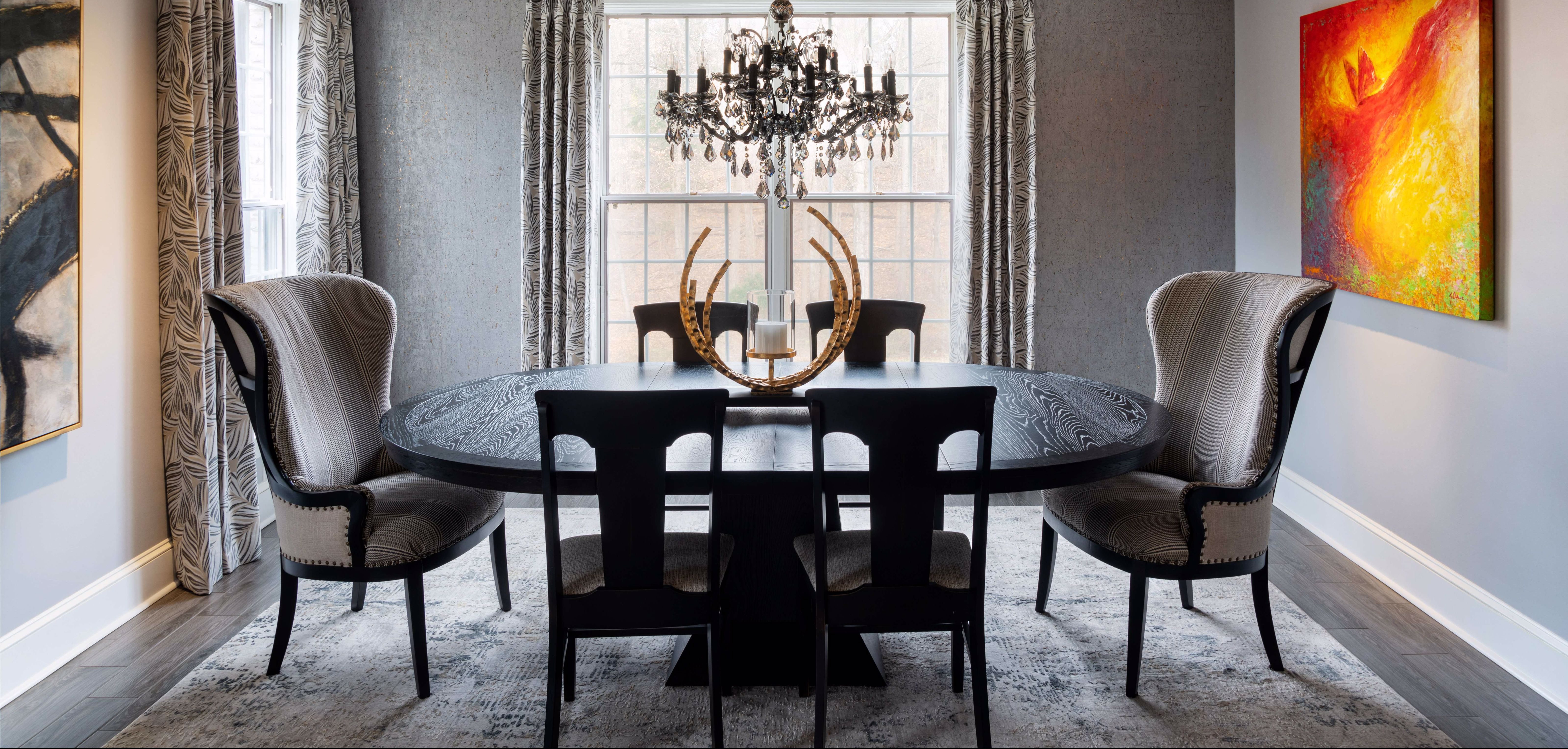


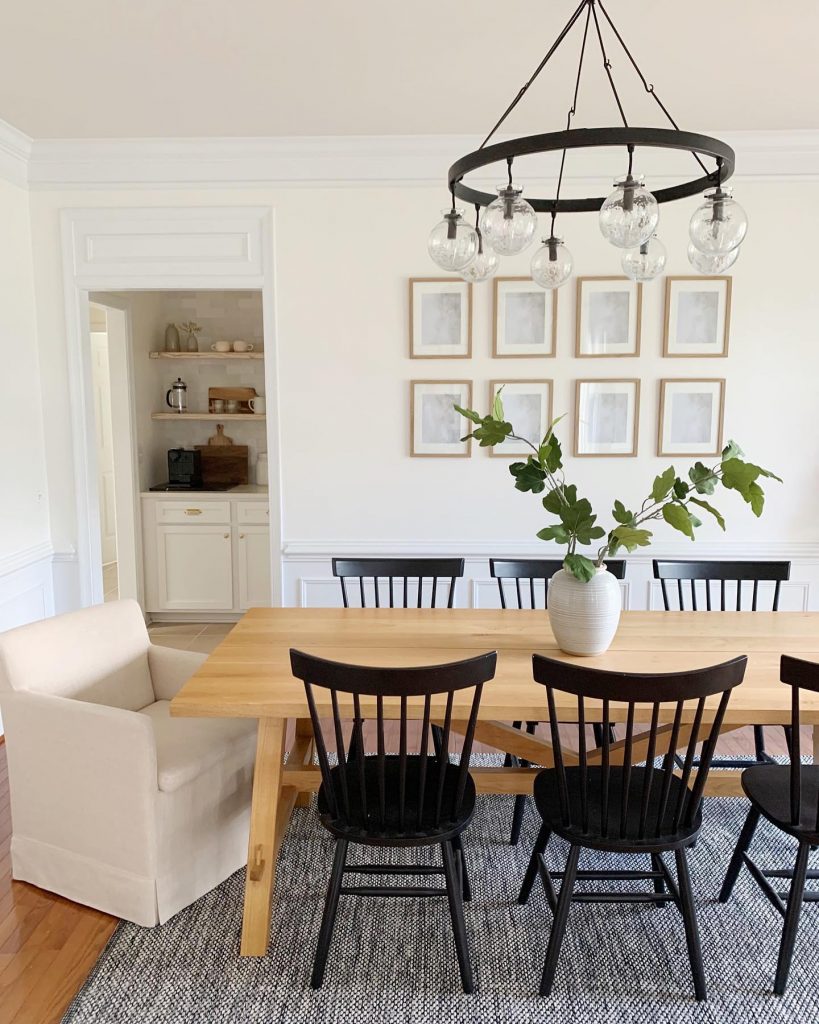


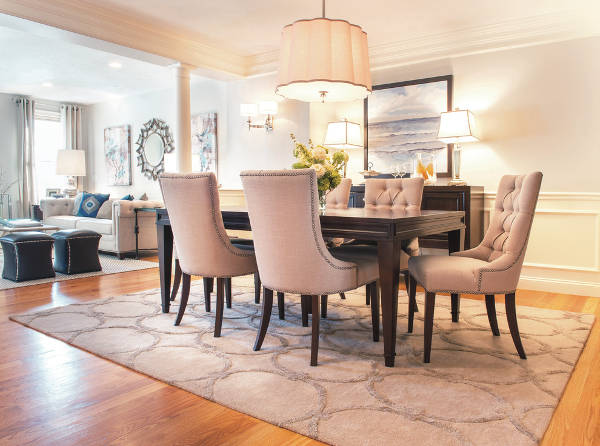


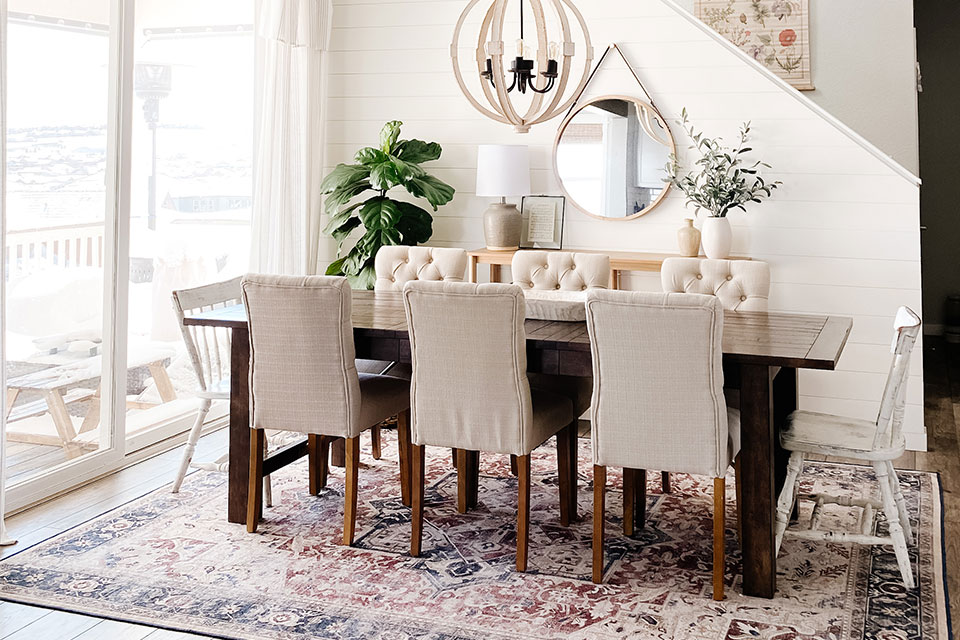


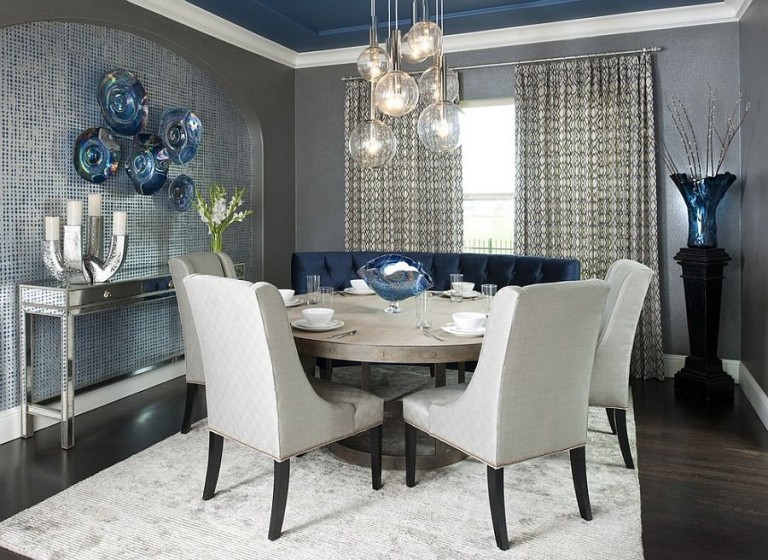

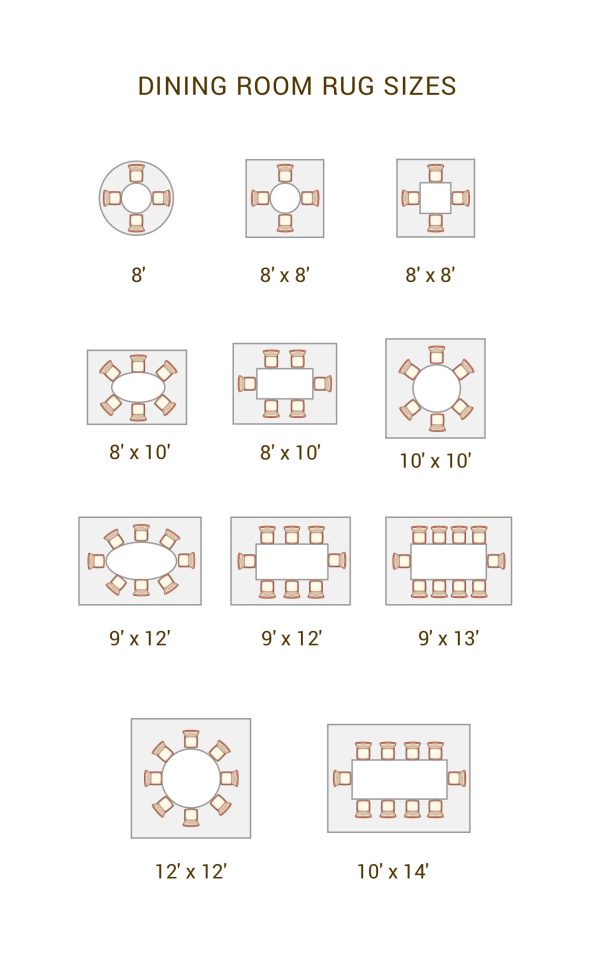

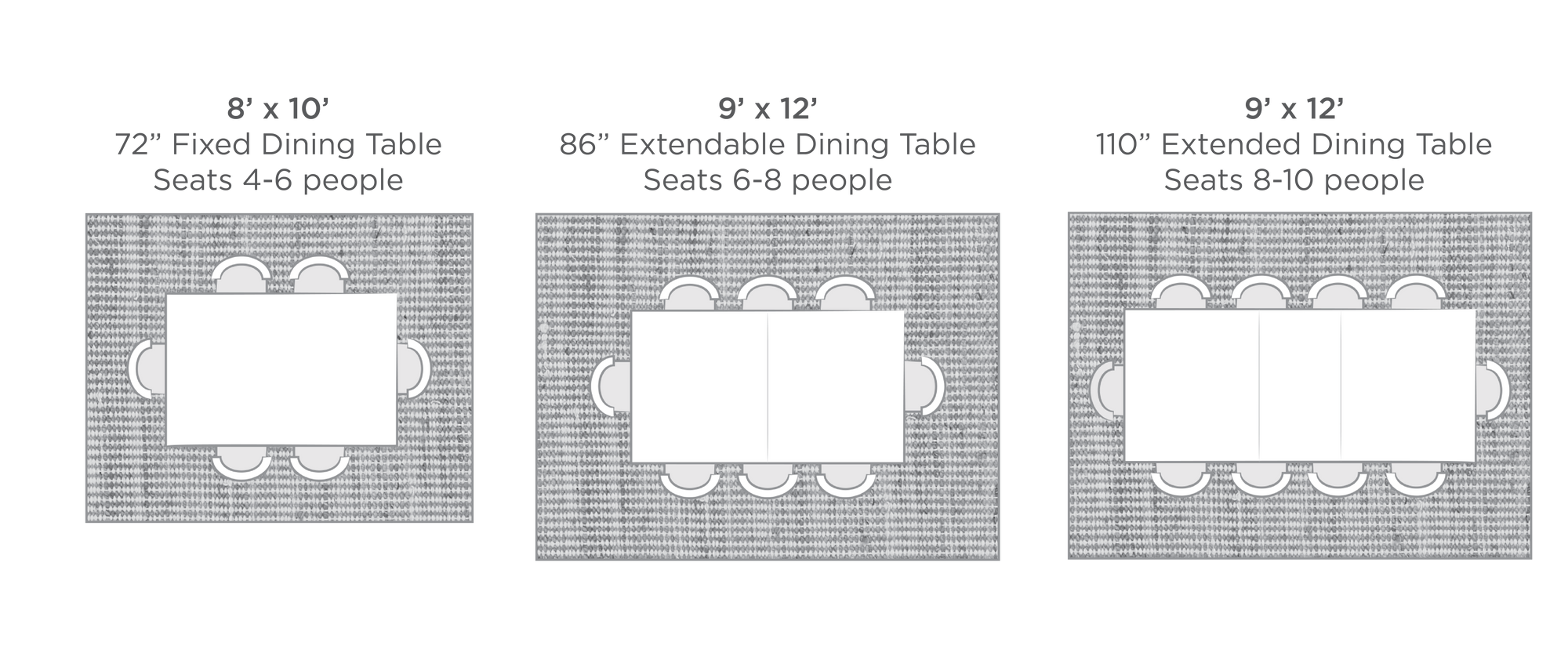
:max_bytes(150000):strip_icc()/DiningRoomwithRug-3034f93d3a964cc8b9ba8b690bebddfb.jpg)
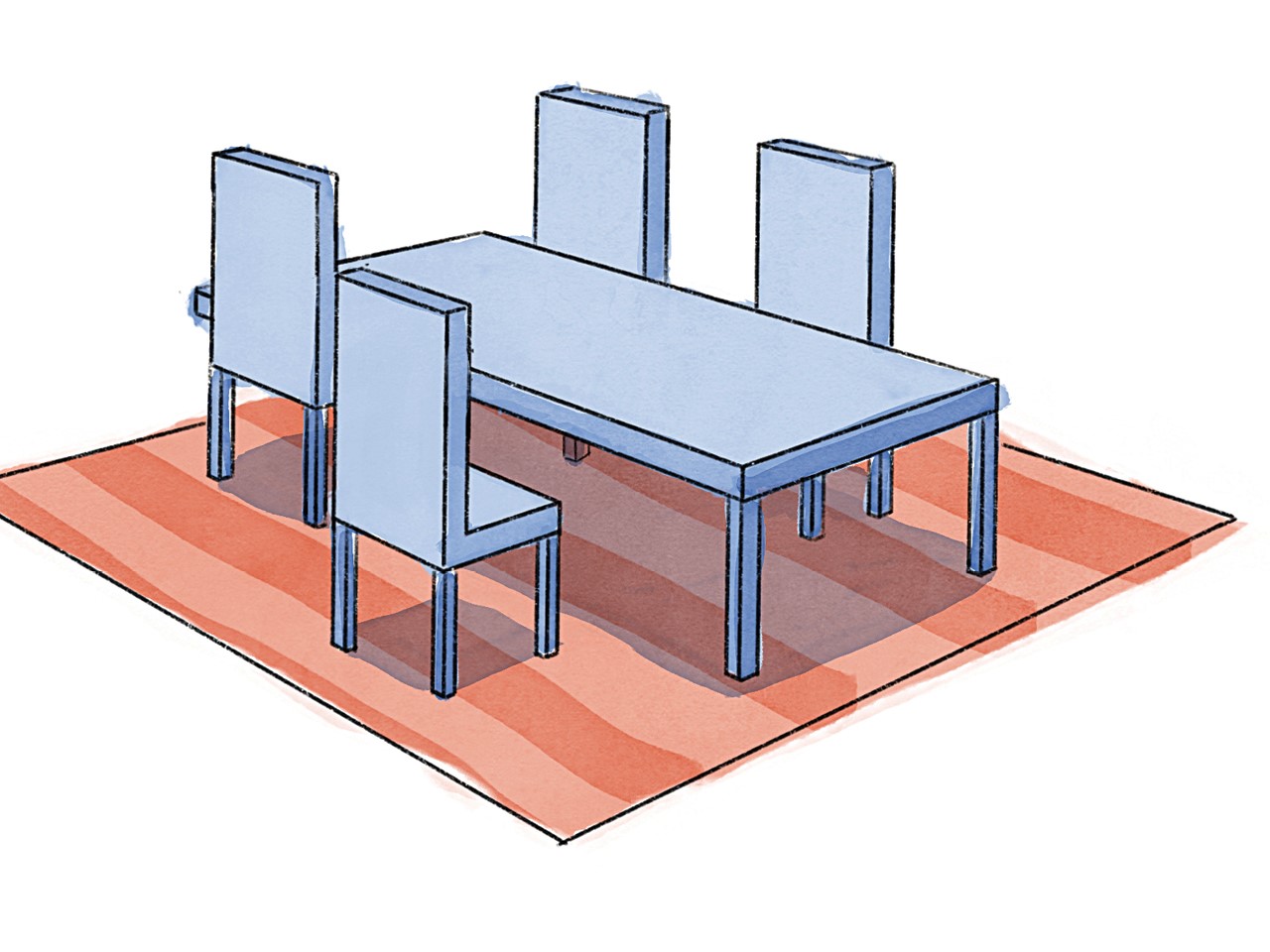

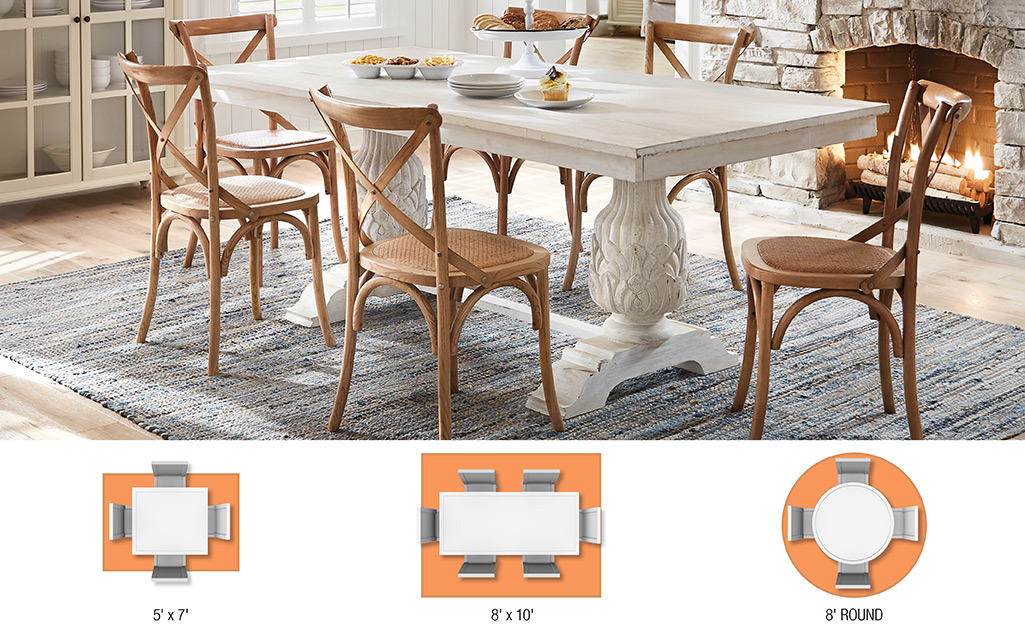
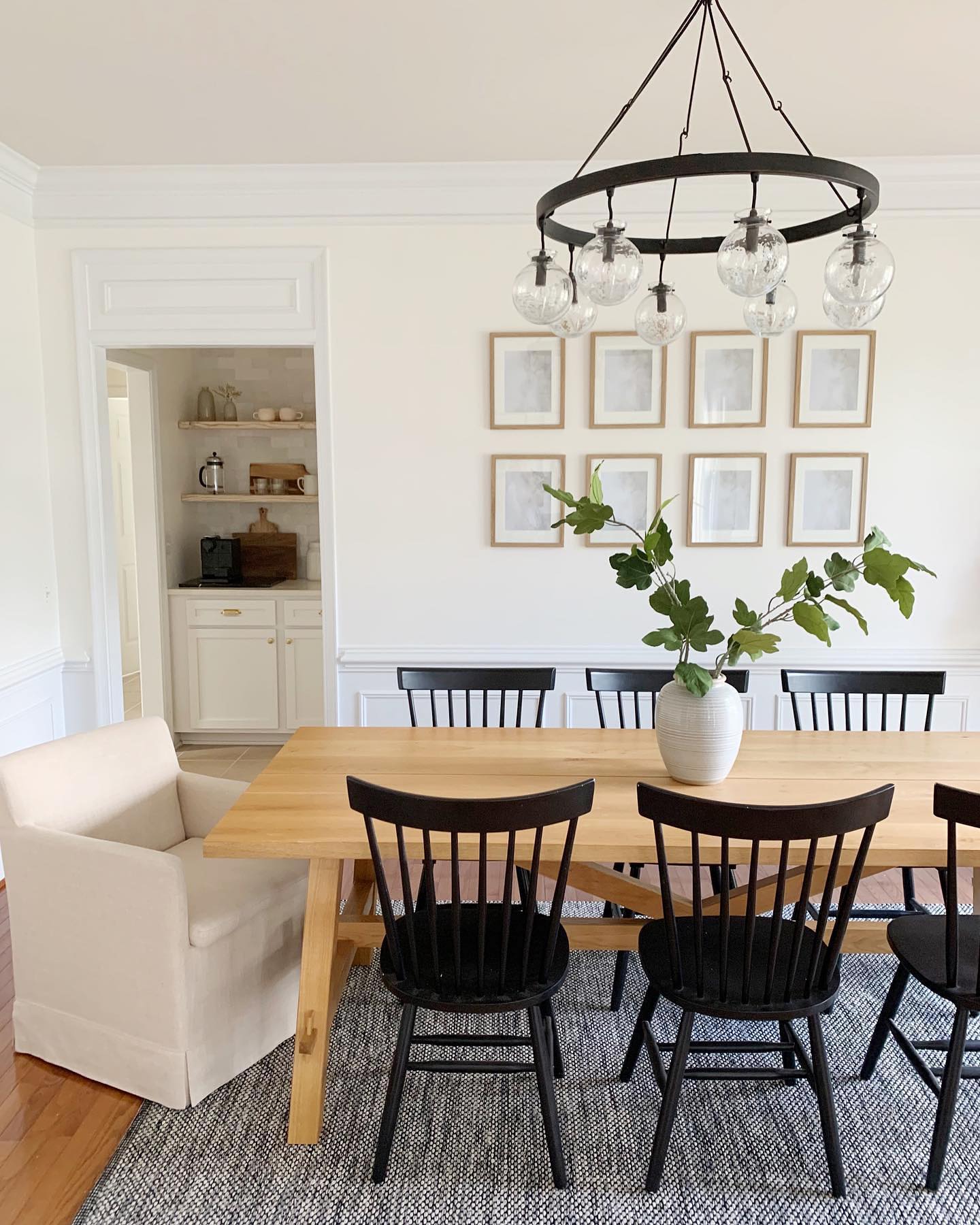


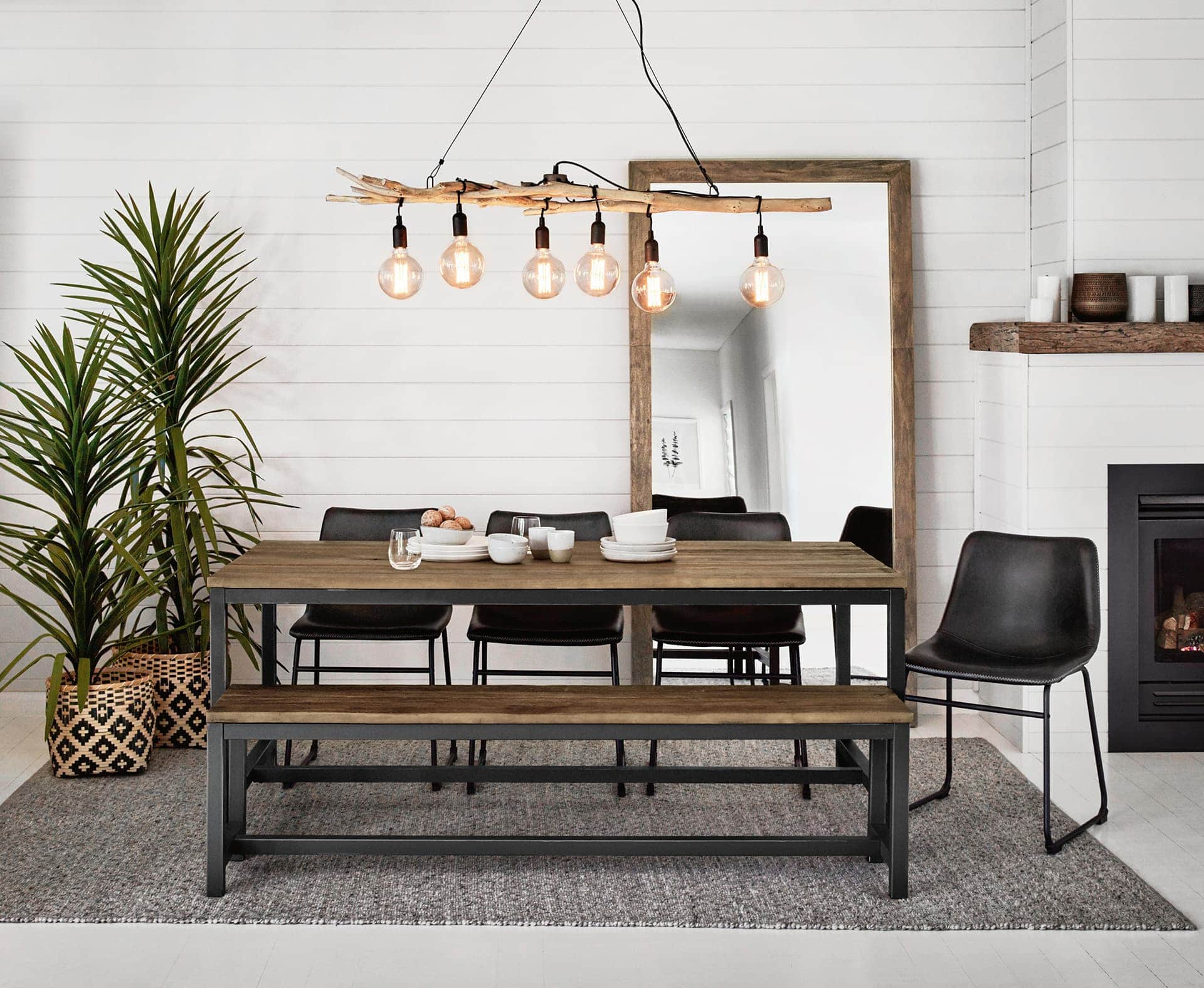
:max_bytes(150000):strip_icc()/choose-dining-room-rug-1391112-hero-4206622634654a6287cc0aff928c1fa1.jpg)



